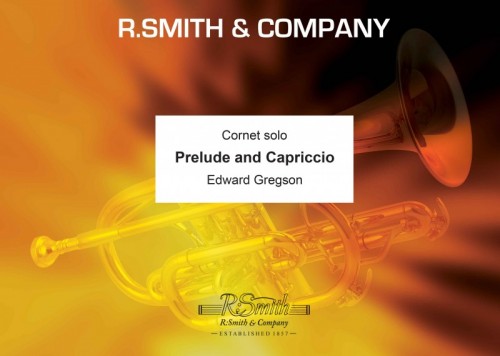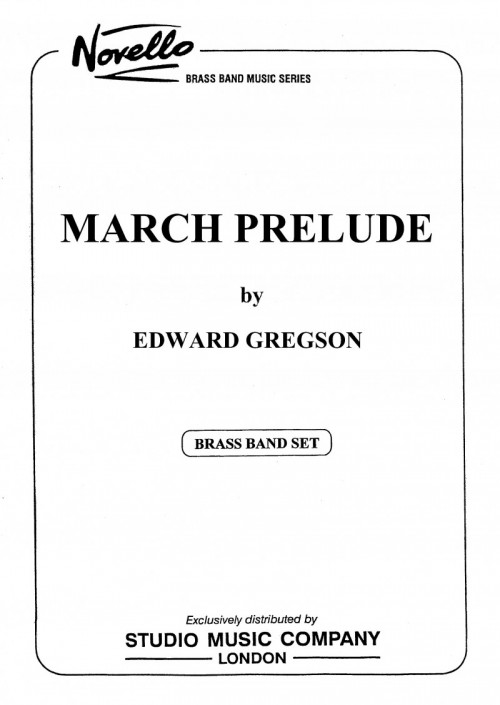Results
-
 £60.99
£60.99Mr. Sandman (Brass Band - Score and Parts)
Who doesn't remember this international 70's hit for Emmylou Harris with it's special 'barber shop' style harmony. The three parts are given to the cornets as soloists with subtle band accompaniment featuring a great part for your vibraphone player. Everyone will leave your concert humming this great tune. 02:04
Estimated dispatch 7-14 working days
-
 £42.95
£42.95PALLADIO (Brass Band) - Jenkins, Karl - Small, Tony
Palladio is probably the most widely recognised of Karl Jenkin's works. It was used for some time in television commercials for DeBeer's Diamonds, in a world-wide campaign. The work was inspired by the sixteenth century Italian architect Andrea Palladio, whose work embraces the renaissance of harmony and order, a philosophy reflecting Karl Jenkins' attitude to composition.
Estimated dispatch 7-14 working days
-
 £37.95
£37.95RIVER CITY SERENADE (Brass Band) - Sparke, Philip
Duration: 4:42 Recorded on Polyphonic QPRL089D Harmony Music, QPRL045D Making Tracks
Estimated dispatch 7-14 working days
-
 £37.95
£37.95SERENADE FOR TONI (Brass Band) - Sparke, Philip
Duration: 5:55 Recorded on Polyphonic QPRL089D Harmony Music
Estimated dispatch 7-14 working days
-
 £42.95
£42.95SOLILOQUY (Trumpet or Cornet/Brass Band) - Sparke, Philip
Duration: 4:56. Recorded on Polyphonic QPRL089D Harmony Music
Estimated dispatch 7-14 working days
-
 £69.95
£69.95SWISS FESTIVAL OVERTURE (Brass Band - Score and Parts) - Sparke, Philip
Duration: 9:11 Recorded on Polyphonic QPRL089D Harmony Music
Estimated dispatch 7-14 working days
-
 £32.95
£32.95SWISS FESTIVAL OVERTURE (Brass Band - Score only) - Sparke, Philip
Duration: 9:11 Recorded on Polyphonic QPRL089D Harmony Music
Estimated dispatch 7-14 working days
-
 £54.20
£54.20THREE GREAT HYMNS (Brass Band) - Lorriman, Howard
Includes: Angelus; Deep Harmony; I Vow to Thee, My Country. Grade: Easy. Please note: soundfile is of Angeuls only
Estimated dispatch 7-14 working days
-
 £24.95
£24.95Prelude and Capriccio (Cornet Solo with Brass Band) - Gregson, Edward
A condensed score is included with this workGregson wrote his Prelude and Capriccio in 1972. It exists in two versions: one for cornet and band and the other for cornet or trumpet and piano.The work began life in the early sixties, the Capriccio being composed when the composer was 17. A Prelude was added to complete the work, which lasts for approximately 8 minutes. The Prelude is reflective in character and uses long melodic lines over undulating chromatic harmony. The music reaches a climax before a brief reprise of the opening. The Capriccio is somewhat jazzy in its opening syncopated rhythms, but has a more lyrical middle section before a finale exploiting the virtuoso character of the instrument.
Estimated dispatch 7-14 working days
-
 £42.95
£42.95March Prelude (Brass Band - Score and Parts) - Gregson, Edward
March Prelude was commissioned to launch the new brass band series by the publisher Novello, in 1968. What makes this little piece different from the usual march is that in the trio section the time signatures change constantly. The main tune of the March is recognisably modal but the harmony surrounding it takes it away from that world.Duration: 3.30
Estimated dispatch 7-14 working days
